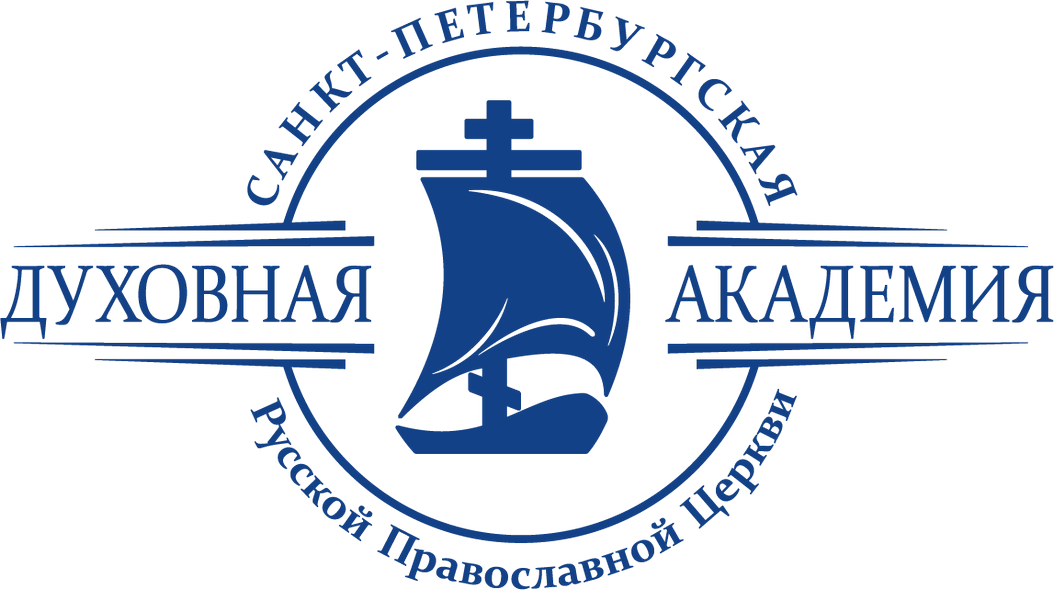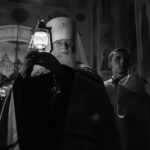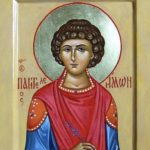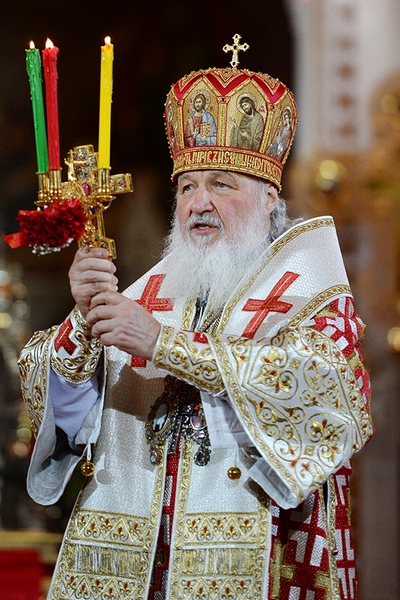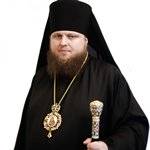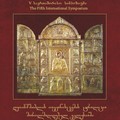
Marian Studies is nowadays a very developed field of Christian studies in all over the world. It has different aspects such as Marian iconography, Marian hymnography, Marian theology (or Mariology). Special researches concern Marian devotions.
In my report I would like to observe some elements of the Cult of the Mother of God in Byzantium, mainly in its capital – Constantinople.
First let me say some words about literature consecrated to this issue. I should notice here that some years ago, in 2011, a very interesting book was published about this subject in the University of Nottigham (UK). Its title is «The Mother of God in Byzantium: Relics, Icons, Texts». Another new book appeared in 2010 is written byBissera V. Pentchevaand titled «Icons and Power. The Mother of God in Byzantium». In 2009 a Canadian professor John Wortley issued his book «Studies on the Cult of Relics in Byzantium up to 1204».
As for Russian scholars I should mention professor Alexey Lidov – a very prominent art historian who is the author and editor of 20 monographs, catalogues and collections of articles, as well as more than 80 articles published in Russian, English, French, Italian, Spanish, Greek and Japanese. His research interests focus primarily on Byzantine iconography and the relations between Christian Orthodox imagery and liturgical theology. For example he edited an international collection of symposium papers Eastern Christian Relics (Moscow 2003) and his book Relics in Byzantium and Medieval Russia: Written Sources (Moscow 2006). Especially for correct description of byzantine practice of religious veneration he coined a term “hierotopy” according to which the creation of sacred spaces should be considered as a special form of human creativity and a subject of cultural history.
About this byzantine phenomenon Lidov published four international collections of papers: Hierotopy. The Creation of Sacred Spaces in Byzantium and Medieval Russia (Moscow 2006), New Jerusalems. Hierotopy and Iconography of Sacred Spaces (Moscow 2009), Hierotopy. Comparative Studies of Sacred Spaces (2009), and Spatial Icons. Textuality and Performativity (Moscow 2009). After Lidov’s conception the veneration of the Theotokos in Byzantium was a kind of miraculous action connected with a Marian icon and described as “spatial icon”.
So we can say that the veneration of the Theotokos in Byzantium was performed as a unity of liturgical, picturesque, symbolical, temporal and spatial interconnections and during such a special service byzantine Christians expressed their love to the Mother of God.
Virgin Mary was given many different epithets: Aeiparthenos, Amolyntos, Dexiokratousa, Diaconissa, Eleousa, Episkepsis, Galaktotrophousa, Glykophilousa, Gorgoepekoos, Hagiosoritissa, Hodegetria, Kardiotissa, Kechariotomene, Kyriotissa, Nikopoios, Pammakaristos, Panton Chara, Paraklesis, Pelagonitissa, Peribleptos, Platytera, Psychosostria, Zoodokos Pege, and others.
Many churches were dedicated to the Virgin and several festival days were celebrated in her honor in Constantinople. For instance, the feast of the Annunciation on 25 March was instituted in the 6th century. The feast of the Dormition on 15 August was established by emperor Маurice (582-602) [ODB (1991), P.2174].
A prominent Russian scholar N.P.Kondakov lists 89 names of Marian churches in Constantinople. But a French researcher R.Janin says that in Constantinople and in its suburbs historically existed more than 120 ecclesiastical buildings devoted to the Theotokos [Janin (1953), P.156]. In his book La Géographie ecclésiastique de l’empire byzantin (1953) Janin mentions and describes 131 Marian churches.
We can find a lot of information about Marian churches in а very interesting book written by Alexander van Millingen in the beginning of the XX century (van Millingen, A., Byzantine Churches in Constantinople, London (1912)).
For example, Alexander van Millingen names one of the oldest churches in Constantinople. It is the church of the Mary Diaconissa which is described by Theophanes, the earliest writer to mention the church of the Diaconissa, who ascribes its foundation to the Patriarch Kyriakos (593-605) in the fourth year of his patriarchate, during the reign of the Emperor Maurice.
The other famous Marian church overlooking the Golden Horn from the heights of the Fifth Hill, was the church of the Theotokos Pammakaristos (the All Blessed), attached to the monastery known by that name. According to a manuscript in the library of the Greek theological college on the island of Halki (one of the small group of islands known as the Princes’ Islands in the Sea of Marmora), an inscription in the bema of the church ascribed the foundation of the building to John Comnenus (1118-1143) and his wife Anna.
Also van Millingen mentions the old Byzantine church in the valley of the Lycus, to the south of the mosque of Sultan Mehemed, and he believes that it should be identified as the church of the Theotokos of Lips because there the annual state visit of the emperor to that shrine took place on the festival of the Nativity of the Virgin. This church of the Theotokos of Lips was also named as church of the St.Mary Panachrantos. It is known that after the Four Crusade (1204) during the Latin Empire in Byzantium in 1245 permission was granted for the transference of the relics of St. Philip the Apostle from the church of the Panachrantos to Western Europe. The document authorising that act was signed by the dean of the church and by the treasurer of St. Sophia.
The Lips monastery contained also the tomb of the Empress Irene, first wife of Andronicus III, and the tomb of the Russian Princess Anna who married John VII Palaeologus while crown prince, but died before she could ascend the throne, a victim of the great plague which raged in Constantinople in 1417.
Alexander van Millingen told a very interesting story about a byzantine church named the church of St. Mary of the Mongols:
«The church of S. Mary of the Mongols which stands on the heights above the quarter of Phanar, a short distance to the west of the Greek Communal School, was founded in the thirteenth century by Maria Palaeologina, a natural daughter of the Emperor Michael Palaeologus (1261-1282). As the church has been in Greek hands ever since its foundation its identity cannot be disputed. The epithet given to the Theotokos in association with this sanctuary alludes to the fact that Maria Palaeologina married a Khan of the Mongols, and bore the title of Despoina of the Mongols. The marriage was prompted by no romantic sentiment, but formed part of the policy by which her father hoped to secure the goodwill of the world for the newly restored Empire of Constantinople. While endeavoring to disarm the hostility of Western Europe by promoting the union of the Latin and Greek Churches, he sought to conciliate the people nearer his dominion by matrimonial alliances with their rulers. It was in this way that he courted, with greater or less success, the friendship of Serbia, Bulgaria, the Duchy of Thebes, and the Empire of Trebizond. And by the same method he tried to win the friendship of the formidable Mongols settled in Russia and Persia. Accordingly he bestowed the hand of one natural daughter, Euphrosyne, upon Nogaya, who had established a Mongolian principality near the Black Sea, while the hand of Maria was intended for Holagu, famous in history as the destroyer in 1258 of the caliphate of Baghdad. Maria left Constantinople for her future home in 1265 with a great retinue, conducted by Theodosius de Villehardouin, abbot of the monastery of the Pantokrator, who was styled the “Prince”, because related to the princes of Achaia and the Peloponnesus. A rich trousseau accompanied the bride-elect, and a tent of silk for a chapel, furnished with icons of gold affixed to crosses, and with costly vessels for the celebration of the Holy Sacrifice. When the mission reached Caesarea news came that Holagu was dead, but since reasons of state inspired the proposed marriage, the bridal party continued its journey to the Mongolian court, and there in due time Maria was wedded to Abaga, the son and successor of Holagu, after the bridegroom had received, it is said, Christian baptism.
In 1281 Abaga was poisoned by his brother Achmed, and Maria deemed it prudent, and doubtless welcome, after an absence of sixteen years, to return to Constantinople. She appears again in history during the reign of her brother Andronicus II Palaeologus, when for the second time she was offered as a bride to the Mongolian prince, Charbanda, who then ruled in Persia, the object of this new matrimonial alliance being to obtain the aid of the Mongols against the Turks, who under Othman had become a dangerous foe and were threatening Nicaea. With this purpose in view Maria proceeded to that city, both to encourage the defense of an important strategic position and to press forward the negotiations with Charbanda. The Despoina of the Mongols, however, did not comprehend the character of the enemy with whom she had to deal. Her contemptuous demeanor towards Othman, and her threats to bring the Mongols against him, only roused the spirit of the Turkish chieftain, and before the Greeks could derive any advantage from the 30,000 Mongolian troops sent to their aid, Othman stormed the fortress of Tricocca, an outpost of Nicaea, and made it the base of his subsequent operations.
The church was built for the use of a convent which the Despoina of the Mongols, like many other ladies in Byzantine times, erected as a haven of refuge for souls who had dedicated their lives to the service of God. She also endowed it with property in the immediate neighborhood, as well as with other lands both within and beyond the city, and while Maria lived the nuns had no reason for complaint. But after her death the property of the House passed into the hands of Isaac Palaeologus Asanes, the husband of a certain Theodora, whom Maria had treated as a daughter, and to whom she bequeathed a share in the convent’s revenues. He, as soon as Theodora died, appropriated the property for the benefit of his family, with the result that the sisterhood fell into debt and was threatened with extinction. In their distress the nuns appealed to Andronicus III Palaeologus for protection, and by the decision of the patriarchal court, to which the case was referred as the proper tribunal in such disputes, the convent in 1351 regained its rights.
As already intimated, to this church belongs the interest of having always preserved its original character as a sanctuary of the Greek Orthodox Communion. This distinction it owes to the fact that the church was given to Christoboulos, the Greek architect of the mosque of Sultan Mehemed, as his private property, to mark the conqueror’s satisfaction with the builder’s work. The grant was confirmed by Bajazet II in recognition of the services of the nephew of Christoboulos in the construction of the mosque which bears that Sultan’s name. Twice, indeed, attempts were subsequently made to deprive the Greek community of the church, once under Selim I and again under Achmed III» [van Millingen (1912), P.272-277].
Being started in Jerusalem the veneration of the Theotokos was spread later throughout the Christian World and after the foundation of Constantinople some relics linked with the terrestrial life and heavenly help of the Mother of God appeared there – in the “New Jerusalem” and “New Rome”, and the City dedicated to Theotokos. She was believed to be the Protectress of Constantinople, and, hence, the Empire itself. She was also contrasted to the pagan Athena as the truly powerful supporter of Byzantium.
As I told many churches and chapels in Constantinople were dedicated in the name of the Mother of God. Of these three were preeminent in age, size, and distinction: the shrines of Chalcoprateia, Blachernae, and Hodegetria. Legend associates all three of these with the name of the Blessed Pulcheria, sister of Theodosius II, wife of Marcian, and co-ruler with both.
Three principal Marian relics at Constantinople were located there. The girdle was particularly associated with the Chalcoprateia church, the shawl (maphorion) with Blachernae church and a miraculous icon with Hodegetria church.
So, we know about very famous tradition of veneration from the time of the emperor John Comnenos (1118–1143). He was especially attached to the icon Hodegetria. He adopted it as his personal Palladium, keeping it in the palace and taking reproductions of it into battle with him. There was a ceremony every Friday in honour of this icon at the Pantokrator monastery which he founded. A procession of monks from that monastery and of clergy from the Eleousa together with the faithful would go to the palace to receive the icon. This they would then conduct with suitable chants to the Pantokrator where it was set up in the heroon, a funerary chapel dedicated to Saint Michael. An all-night vigil was terminated with the Eucharist, followed by a distribution of bread, wine, and even money, after which the icon was returned to the palace. A similar ceremony took place on other occasions too.
Several different icons of the Virgin are known to have existed in the monastery oа Blachernai that is why they were named icons of Virgin Blachernitissa. There was a miraculous image of the Virgin and Child there in the 8th century (See: vita of St. Stephen the Younger, PG 100:1076В, 1080АВ). From the 10th century we have an evidence about another icon of this type: in the imperial bath area near the chapel of St. Photeinos was a marble image of the Virgin from whose outstretched hands flowed the hagiasma, or holy water (See: De ceremoniis:555.8-10).
One of these Blachernai icons, was kept in the right side of the monastery church covered by a veil that miraculously lifted without human aid every Friday evening. This “habitual miracle” is not mentioned before the second half of the 11th century or after 1204.
The icon of the TheotokosBlacherniotissa was very popular among byzantine people; it was taken with emperors in their military campaigns and it was even figured in many byzantine seals of the 11th century.
One of the most famous Marian churches of Constantinople, the Zoodochos Pege, is located outside the land walls to the west of the city, opposite the Silivri gate, at the site now known as Balikli. This ancient sanctuary of the Virgin was planted with trees and had a source of water (pege)that came to be regarded as miraculous.
There are two very old versions concerning the origins of this ancient shrine.
According to the first, related by the historian Procopius, emperor Justinian (527-565) while hunting in a beautiful part of the land with many trees and much water, had the vision of a small chapel with a large crowd of people and a priest in front of a spring. It is the spring of miracles, he was told, whereupon the Emperor built a monastery at the site. Actually, according to Cedrenus records we know the monastery was built in 560.
The second version, narrated by the chronicler Nicephoros Callistos, says that the Emperor Leo I (457-474), when still a simple soldier, met at the golden Gate a blind man who asked him for a drink of water. As he looked around for water, a voice directed him to the spring and enjoined him to build a church on the site when he would become emperor. Callistos describes this great church in detail.
This description we can find in Patrologia Graeca («Description of the holy church of the Pege erected by Leo», P.G. Migne, vol. 147, P.73-77), but the description agrees more with the church built by Justinian. Moreover, it is historically confirmed that Zenon, Hegumen «of the house of the most holy and glorious Virgin Mary and Mother of God at Pege», participated in the Council of Constantinople, convened by the Patriarch Menas (536-552) in 536. The miracles of the “life-containing source” were in great number. For instance, empress Irene (797-802) was healed of a hemorrhage by drinking from the source and made rich offerings to the church, including a mosaic- representing herself and her son Consiatitine VI. After the earthquake of 869 Basil I rebuilt the church and decorated it with a cycle of mosaics. Burned by Tsar Symeon of Bulgaria in 924, the church was soon repaired and was regularly visited by the emperor on the feast of the Ascension (See: De ceremoniis: 108.13-114.0, 774.19-775,6).
From the year 966 we have the description of an official ceremony on Ascension Day, in the presence of the Emperor Nicephoros II Phocas (963-969) and of the whole court. The procession sailed to the Golden Gate and from there rode to the shrine, while the crowd cheered and offered flowers and crosses. The Patriarch met and embraced the Emperor, and they entered the church together. The Emperor attended the Liturgy from a platform set up in the sanctuary, and the feast ended with the Emperor inviting the Patriarch to an official banquet.
Nicephoros Callistos writing in the 14th century about the hagiasma quotes from various sources a total of 63 miracles, of which 15 in his own time. A number of epigrams express awe, veneration and enthusiasm for the hagiasma and the miracles associated with it. Preserved to our day are six by Manuel Philes, another six by the Magister Ignatius, one by John Mauropous and others.
The Marian icon Zoodochos Pege is so-titled because “Zoodochos Pege” (i.e. Life-giving Fount) is an epithet of the Holy Virgin and Her representation as Zoodochos Pege is related to the sacred spring. It soon became very popular and this type of icon was spread throughout the Orthodox world, particularly in places where a spring was believed to be hagiasma. In the 9th century, Joseph the Hymnographer gave for the first time the title «Zoodochos Pege» to a hymn for the Mother of God.
According to the given examples it is observed a continuity of the veneration of the Theotokos in Byzantium in different iconographical, liturgical, ceremonial aspects in common and personal life of Byzantines connected not only with the theological, Christological issues and historical events but also with the memory about the real link between the Heavens and our terrestrial World. This link is manifested by numerous icons dedicated to our Protectness – Mother of God.
In conclusion we can say that Byzantine tradition of the veneration of the Theotokos had different forms and aspects and it influenced religious practices in the East and in the West. Nowadays its great importance continues mainly to be seen in the Orthodox commonwealth as post-byzantine world.
Bibliography
Lidov A., Hierotopy. The Creation of Sacred Spaces in Byzantium and Medieval Russia. – Moscow, – 2006.
Janin R., La Géographie ecclésiastique de l’empire byzantin. – Paris,– 1953.
Janin R., Constantinople byzantine: développement urbain et repertoire topographique, Institut Français d’Etudes Byzantines. – Paris, – 1964.
Mango C., Studies on Constantinople, Variorum / Ashgate – Aldershot, – 1993.
Necipoğlu N. (ed.), Byzantine Constantinople: Monuments, topography and everyday life. – Brill – Leiden, – 2001.
Mainstone R., Hagia Sophia: Architecture, structure and liturgy of Justinian’s Great Church. – Thames & Hudson – London, – 1988.
Majeska G.P., Russian travelers to Constantinople in the fourteenth and fifteenth centuries // Dumbarton Oaks Studies, № 19. – Washington D.C. – 1984.
Mathews T.F., The early churches of Constantinople, Penn. State UP (University Park Pa. – London, – 1971.
Mathews T.F., The Byzantine churches of Istanbul. A photographic survey, Penn. – State UP University Park Pa. – London, – 1976.
The Oxford Dictionary of Byzantium (ed. by A.Kazdan). – Oxford , – 1991.
van Millingen, A., Byzantine Churches in Constantinople. – London, – 1912.
van Millingen, A., Byzantine Constantinople: the Walls of the City and Adjoining Historical Sites. – London, – 1899.
